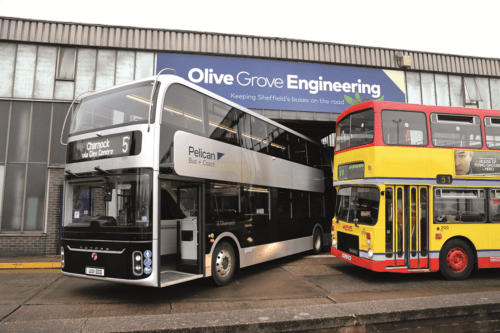
Jonathan Welch puts the new Yutong U11DD demonstrator through its paces on Sheffield’s hilly route 51
It’s only a decade or so ago that Chinese-made buses didn’t have a great reputation in the UK, King Long having tried to make its mark but without lasting success. One of my own first jobs when I joined the CBW team was to cover an event marking the 500th Yutong sold in the UK, achieved in just five years, and with the team at importer Pelican Bus & Coach aiming to ramp up the number of deliveries many-fold.
Of course, the pandemic intervened, but at the same time, the move to electric buses, and to a lesser extent coaches, has helped the manufacturer gain a growing foothold in the UK market, backed by the experience of having delivered many thousands of vehicles in its home country already. The E10 and E12 electric buses have become a familiar sight in many places, along with the newer E9, whilst the Tce12 electric coach can be found pounding Scottish motorways on express routes, as well as with diverse English operators.
The obvious next step was a double-decker, and that was presented to the public for the first time at Busworld in Brussels; a second example was already in the UK and heading for trials with the first of a number of well-known operators up and down the country. Existing Yutong customer Newport Transport has already ordered the first two production vehicles.
[…]By subscribing you will benefit from:
- Operator & Supplier Profiles
- Face-to-Face Interviews
- Lastest News
- Test Drives and Reviews
- Legal Updates
- Route Focus
- Industry Insider Opinions
- Passenger Perspective
- Vehicle Launches
- and much more!


